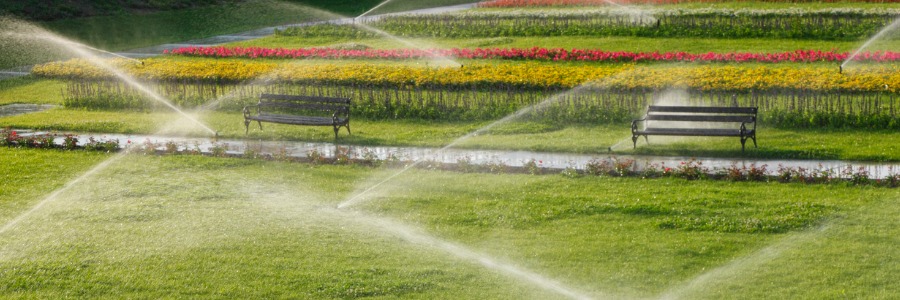
When you’re conserving water use in drought times but want to continue to irrigate landscapes with optimal efficiency—a smart irrigation system leaves traditional methods of irrigation behind in the dust. As technology evolves with each passing year, it’s only getting smarter. So why use smart irrigation instead of conventional methods of irrigation?
Traditional irrigation systems are pre-set manually to turn on and off using a timer. It doesn’t matter if an unexpected downpour occurs on a scheduled day or the soil deep beneath the ground surface where the eye can’t see has become oversaturated. That timer is pre-set to water on each scheduled day; rain, or shine. Clearly, this isn’t the most efficient or cost-effective way to manage landscape irrigation in times of drought.
Studies show that 70% of water consumption around the world is used for irrigation, and half of that is wasted due to inefficient, traditional irrigation practices. The optimal way to manage irrigation and nurture your landscape would be to know how much hydration plant roots deep need on any given day or if they’re getting too much scheduled watering.
The good news is today’s cloud-based smart irrigation does the work for you. It takes control of watering your plants and landscape, adjusting day by day, hour by hour, as it continuously collects and ingests weather data in real-time at your specific site. Taking that Smart technology below ground, embedded deep in the root zone of plants, ultra-sensitive Soil Moisture Sensors electronically transmits soil moisture content readings to the Smart Controller and automatically delivers the perfect amount of water needed to plant roots— no more, no less– to keep plants above ground healthy and thriving.
Smart Irrigation systems save water, time, and money. Studies show that up to 50% of water usage for landscape irrigation can be saved with cloud-based Smart Irrigation systems. As a result, Smart systems typically pay for themselves in water savings within two years. Smart Irrigation is not only cost-effective, but also the responsible thing to do. Not only in these times of drought, but as we strive to conserve our finite and dwindling water sources, and protect our environment and leave our world a better place for future generations to come.


